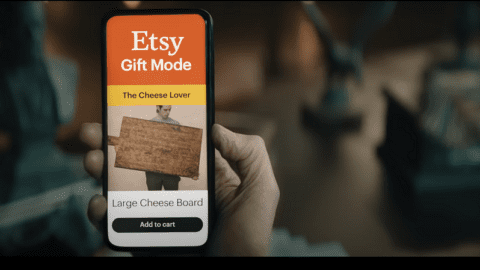In today’s digitally disrupted world, leading players are creating superior customer care with interactions that are personalized, accurate, collaborative, timely, and appropriately self-served.
Albert Einstein once said, “If you can’t explain it simply, you don’t understand it well enough.” This is true for the challenges many companies are facing as they try to be everywhere for everyone in today’s digitally connected, omnichannel world. The complexity of an ever-increasing variation in channels, devices, and data makes navigating the path to “simple” more challenging than ever.
For many, this may seem like an uncontrollable environment with transactions and interactions happening haphazardly, with the customers solely in control. Yet, although today’s customers are definitely more active participants in determining how they interact with a company, they don’t always know the best route. In fact, many won’t know a great customer interaction until they experience it. Leading companies stay ahead of their customers to continuously optimize the ways of interacting, thinking of themselves as the GPS to help customers navigate the journey instead of leaving them to wander on their own.
Advertisement
A.T. Kearney’s Future Of Customer Interaction Study shows that companies see a wealth of value in improved customer service. Nearly 40% of executives see customer service — rather than product and price innovation — as a market differentiator. As many as 50% listed all three as equally important. For leading organizations, customer service and care is a mindset that stretches across their ways of working rather than being isolated in one functional area.
The focus on developing communication channels to address the how of customer interactions is just one part of the equation. The other part is understanding why they are choosing to interact — and then making it as easy as possible, as well as helping them avoid the need to contact you in the first place if proactive options are available. After all, customers are people — not devices — and they respond best to other people who can minimize the level of effort needed to get things done.
So where is the best place to begin to improve customer care and customer experience? Focusing on the contact center will not be enough. Although this is often where a problem is received, it is less often the actual source of the problem. Taking a hard look both upstream and downstream from the contact center is vital to finding the root cause of customers’ contacts and eliminating the need for support.
Not all contacts are transactional, and leading players know which ones are engagements and which are transactions. Along with known and analytically predicted customer preferences, this awareness helps companies provide the right level of self-service and full-service support.
There is no doubt that a mix of support options will be needed. Five moves can help players navigate the digitally disrupted world of customer interactions and contacts:
- Develop a clear baseline. Understand where and when customers are contacting you. Look across channels, and do not focus solely on phone calls received. Look beyond frequency to see what drives customers’ delight and disappointment.
- Don’t forget about the why and the overall customer journey. Knowing how customers are trying to contact you is not enough. Leading brands understand why customers contact them and how it fits into their overall journey.
- Prioritize and define journeys and contact types. Do not try to solve all issues at once. Focus on those that either are the most frequent or impact the most value. Use this to develop a view of how to best support customers as they try to make contact.
- Develop integrated teams to continuously improve interactions. Designing and improving interactions will require internal groups to work together beyond a single silo. Develop cross-functional teams that are focused on the desired outcome, and determine how ways of working need to change to make the most of the new customer journeys.
- Test and learn. As stated earlier, customers may not be able to describe a desired interaction until they experience it. As potential improvements are identified, put structured pilot programs in place to identify the impact and assess customer and employee adoption. If it isn’t working, recalibrate and try again.
After understanding why and where customers are interacting with the company, turn the spotlight toward making it easier with improved processes for navigating the how. Successful customer care in today’s digital age hinges on simplified interactions that fit the PACTS model. Integrated PACTS — as the word implies — are based on the customer and the company working together for more effective interactions, not just another transaction. The PACTS approach is not a menu of potential options but a collection of aspects that when woven together create effective interactions.
In addition, A.T. Kearney’s Integrated Channel Engagement research indicates that 70% of customers are willing to share information with a brand to get better service or personalized offers. The willingness is there; brands just need to tailor experiences to make the most of that information and the context within which the customer is engaging with them. PACTS can help do just that. It is not easy, but keeping in mind the following elements will help in navigating the path to “simple.”
Personalized. Remember the “person” in personalization. A constant barrage of real-time messaging, offers, and options can frustrate even the most disciplined multitasker. Creating personalized experiences is about providing relevant, tailored content with the right message at the right time in the right format. This is also where the element of context comes in. Make it about the customer and what she is doing. After all, her context will change based on what she is trying to do.
Accurate. The information customers receive should be correct and consistently communicated across channels. When they transition across channels, information should move with them. Accurate also includes the word “curate” which relates to providing information that is meaningful and relevant.
Collaborative. Be prepared to support customers when self-service does not meet their needs. As more simple interactions move to self-service, contacts that end up being handled by live agents may be more complicated than in the past. Therefore, it will be crucial to ensure that agents have the skills and knowledge to support these customers. A collaborative mindset is also needed for cross-company partnerships to improve the end-to-end customer experience.
Timely. Anticipate and predict when customers will need assistance, and offer relevant support, notifications, and information. This includes inbound and outbound communications before, during, and after a transaction and as part of the customer’s overall journey — anything to make it easier for the customer. For example, provide a link to a video showing how to set up a recently purchased product, send a reminder about a product upgrade, offer a live chat feature in a mobile app, or let air travelers know when a flight gets cancelled and provide easy ways to reschedule. For now, mobile phones are the main glue that help customers as they move across channels, but as both location awareness (and/or check ins) and the Internet of Things — the web of connected devices — grows, the points and timelines of interactions will also grow.
Self-serviced. When appropriate, make it easier for customers to perform tasks and find information without having to talk to a live person. This may also include customers helping each other via social media and community groups. We expect informational videos and video interactions to continue to grow. Above all, self-service should not be a standalone option; it should be a cohesive, seamless element of the overall PACTS experience.
Companies that view today’s connected consumer and digital world as an opportunity to foster deep customer engagement will thrive. No doubt, self-service and automation will continue to grow. Leaders, however, will differentiate themselves by viewing self-service and automation as powerful tools in the customer journey rather than just ways to reduce costs. These concepts are not confined to contact centers. Across channels and industries, a PACTS mindset can be a win-win for companies and their customers.
Adam Pressman is a partner in the retail and strategic IT practice of A.T. Kearney, a global strategy and management consulting firm. He can be reached at Adam.Pressman@atkearney.com. Joshua Swartz is a consultant at A.T. Kearney. He can be reached at Joshua.Swartz@atkearney.com.









